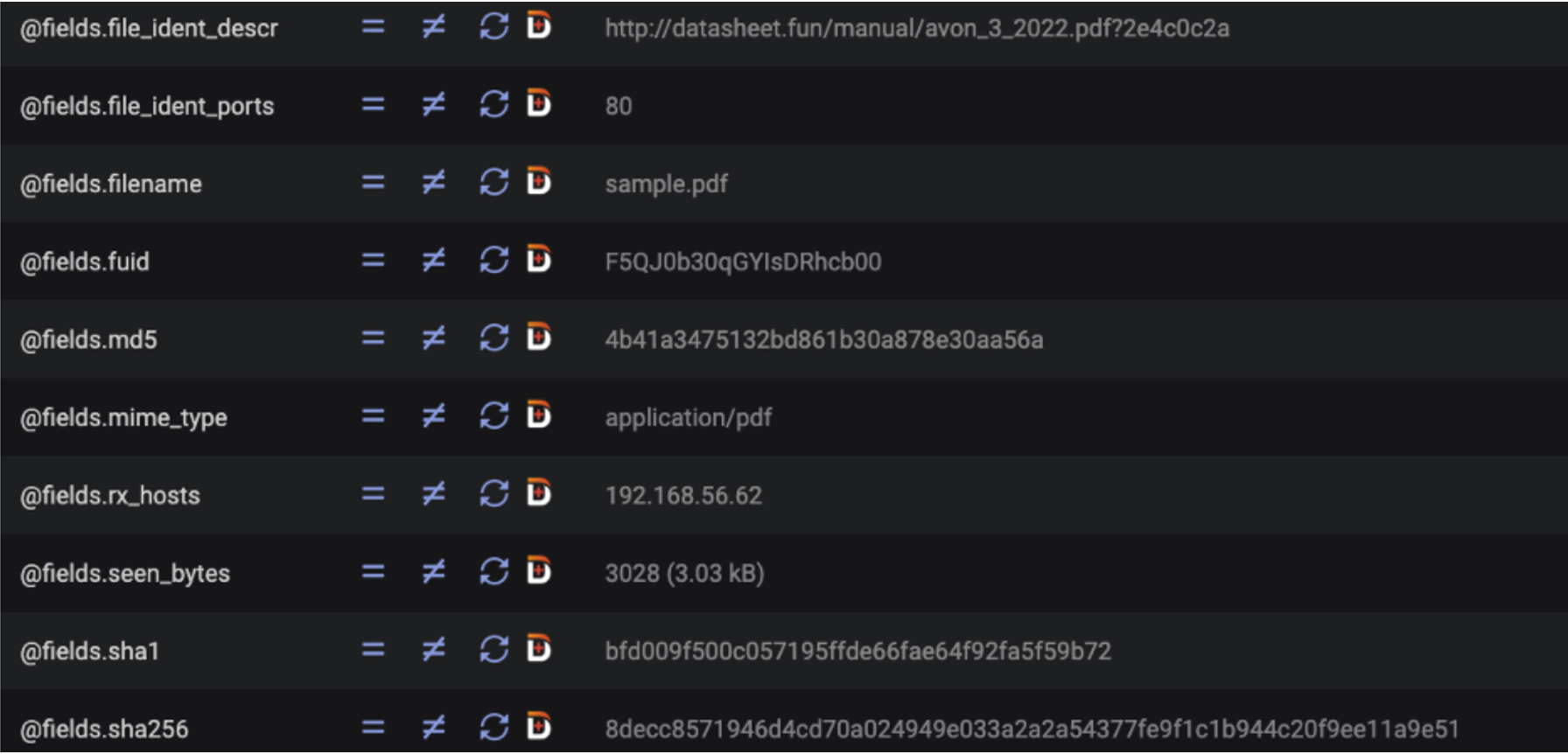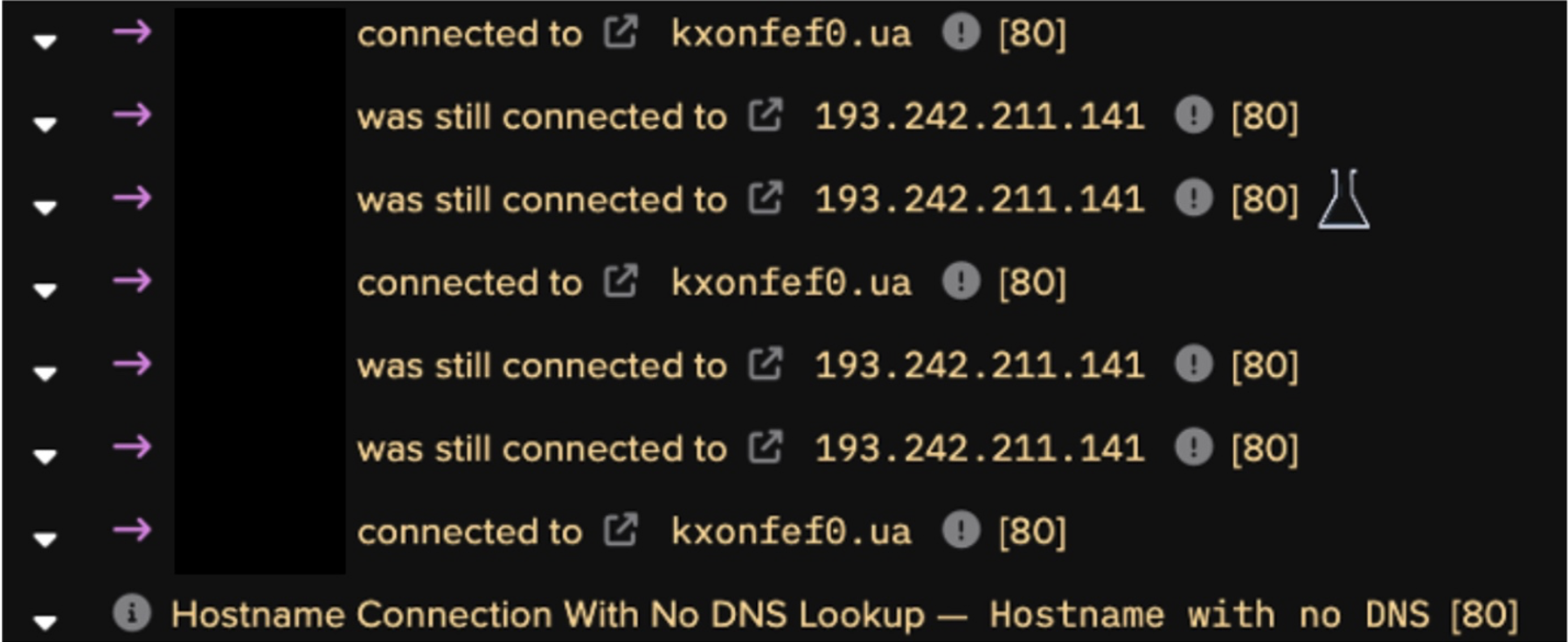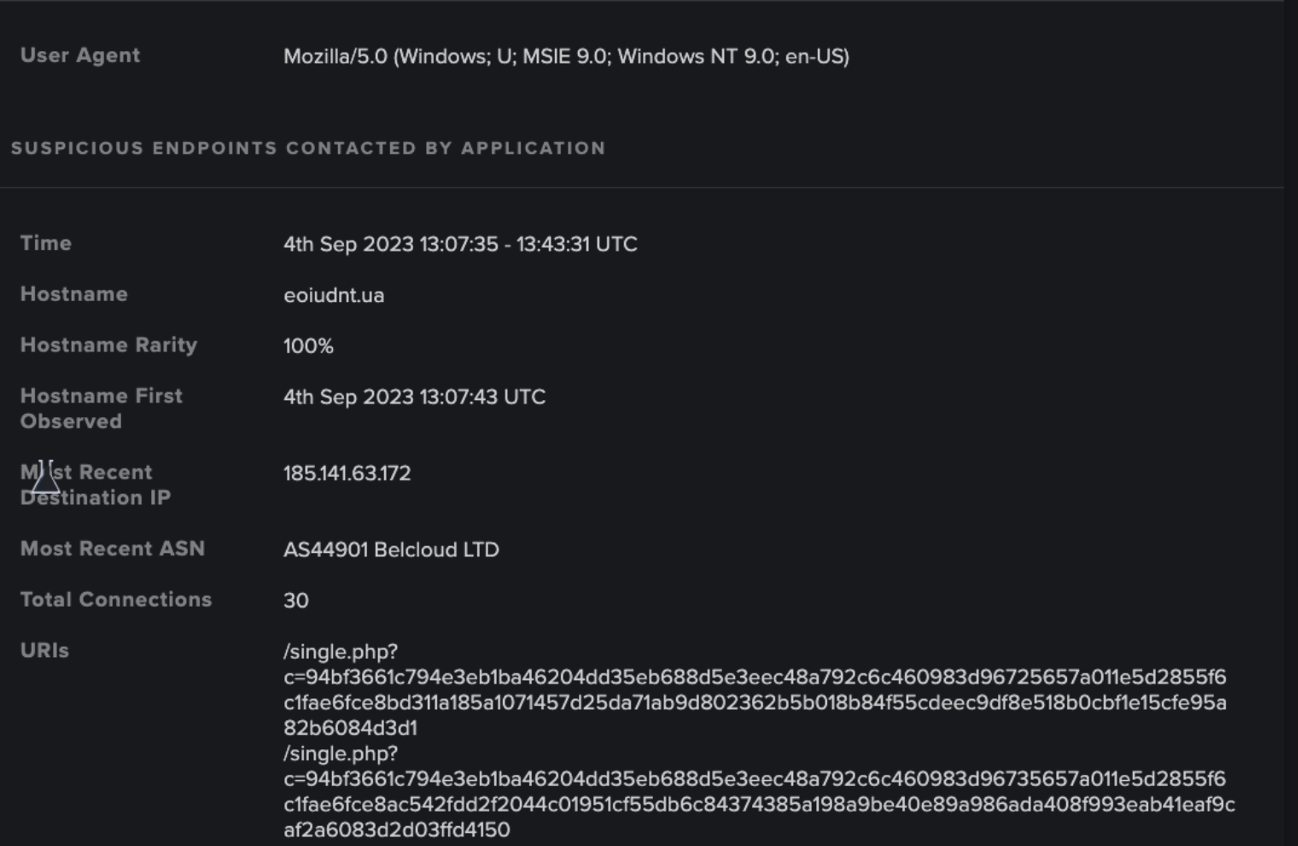What are botnets?
Although not a recent addition to the threat landscape, botnets persist as a significant concern for organizations, with many threat actors utilizing them for political, strategic, or financial gain. Botnets pose a particularly persistent threat to security teams; even if one compromised device is detected, attackers will likely have infected multiple devices and can continue to operate. Moreover, threat actors are able to easily replace the malware communication channels between infected devices and their command-and-control (C2) servers, making it incredibly difficult to remove the infection.
Botnet example: Socks5Systemz
One example of a botnet recently investigated by the Darktrace Threat Research team is Socks5Systemz. Socks5Systemz is a proxy-for-rent botnet, whereby actors can rent blocks of infected devices to perform proxying services. Between August and November 2023, Darktrace detected indicators of Socks5Systemz botnet compromise within a cross-industry section of the customer base. Although open-source intelligence (OSINT) research of the botnet only appeared in November 2023, the anomaly-based approach of Darktrace DETECT™ allowed it to identify multiple stages of the network-based activity on affected customer systems well before traditional rules and signatures would have been implemented.
Darktrace’s Cyber AI Analyst™ complemented DETECT’s successful identification of Socks5Systemz activity on customer networks, playing a pivotal role in piecing together the seemingly separate events that comprised the wider compromise. This allowed Darktrace to build a clearer picture of the attack, empowering its customers with full visibility over emerging incidents.
In the customer environments highlighted in this blog, Darktrace RESPOND™ was not configured to operate autonomously. As a result, Socks5Systemz attacks were able to advance through their kill chains until customer security teams acted upon Darktrace’s detections and began their remediation procedures.
What is Socks5Systemz?
The Socks5Systemz botnet is a proxy service where individuals can use infected devices as proxy servers.
These devices act as ‘middlemen’, forwarding connections from malicious actors on to their intended destination. As this additional connectivity conceals the true origin of the connections, threat actors often use botnets to increase their anonymity. Although unauthorized proxy servers on a corporate network may not appear at first glance to be a priority for organizations and their security teams, complicity in proxy botnets could result in reputational damage and significant financial losses.
Since it was first observed in the wild in 2016, the Socks5Systemz botnet has grown steadily, seemingly unnoticed by cyber security professionals, and has infected a reported 10,000 devices worldwide [1]. Cyber security researchers noted a high concentration of compromised devices in India, with lower concentrations of devices infected in the United States, Latin America, Australia and multiple European and African countries [2]. Renting sections of the Socks5Systemz botnet costs between 1 USD and 4,000 USD, with options to increase the threading and time-range of the rentals [2]. Due to the lack of affected devices in Russia, some threat researchers have concluded that the botnet’s operators are likely Russian [2].
Darktrace’s Coverage of Socks5Systemz
The Darktrace Threat Research team conducted investigations into campaign-like activity across the customer base between August and November 2023, where multiple indicators of compromise (IoCs) relating to the Socks5Systemz proxy botnet were observed. Darktrace identified several stages of the attack chain described in static malware analysis by external researchers. Darktrace was also able to uncover additional IoCs and stages of the Socks5Systemz attack chain that had not featured in external threat research.
Delivery and Execution
Prior research on Socks5Systemz notes how the malware is typically delivered via user input, with delivery methods including phishing emails, exploit kits, malicious ads, and trojanized executables downloaded from peer-to-peer (P2P) networks [1].
Threat actors have also used separate malware loaders such as PrivateLoader and Amadey deliver the Socks5Systemz payload. These loaders will drop executable files that are responsible for setting up persistence and injecting the proxy bot into the infected device’s memory [2]. Although evidence of initial payload delivery did not appear during its investigations, Darktrace did discover IoCs relating to PrivateLoader and Amadey on multiple customer networks. Such activity included HTTP POST requests using PHP to rare external IPs and HTTP connections with a referrer header field, indicative of a redirected connection.
However, additional adjacent activity that may suggest initial user execution and was observed during Darktrace’s investigations. For example, an infected device on one deployment made a HTTP GET request to a rare external domain with a “.fun” top-level domain (TLD) for a PDF file. The URI also appears to have contained a client ID. While this download and HTTP request likely corresponded to the gathering and transmission of further telemetry data and infection verification [2], the downloaded PDF file may have represented a malicious payload.

Establishing C2 Communication
Once the proxy bot has been injected into the device’s memory, the malware attempts to contact servers owned by the botnet’s operators. Across several customer environments, Darktrace identified infected devices attempting to establish connections with such C2 servers. First, affected devices would make repeated HTTP GET requests over port 80 to rare external domains; these endpoints typically had “.ua” and “.ru” TLDs. The majority of these connection attempts were not preceded by a DNS host lookup, suggesting that the domains were already loaded in the device’s cache memory or hardcoded into the code of running processes.

While most initial HTTP GET requests across investigated incidents did not feature DNS host lookups, Darktrace did identify affected devices on a small number of customer environments performing a series of DNS host lookups for seemingly algorithmically generated domains (DGA). These domains feature the same TLDs as those seen in connections without prior DNS host lookups.

These DNS requests follow the activity reported by researchers, where infected devices query a hardcoded DNS server controlled by the threat actor for an DGA domain [2]. However, as the bulk of Darktrace’s investigations presented HTTP requests without a prior DNS host lookup, this activity indicates a significant deviation from the behavior reported by OSINT sources. This could indicate that multiple variations of the Socks5Systemz botnet were circulating at the time of investigation.
Most hostnames observed during this time of investigation follow a specific regular expression format: /[a-z]{7}\.(ua|net|info|com|ru)/ or /[a-z0-9]{15}\.(ua)/. Darktrace also noticed the HTTP GET requests for DGA domains followed a consistent URI pattern: /single.php?c=<STRING>. The requests were also commonly made using the “Mozilla/5.0 (Windows; U; MSIE 9.0; Windows NT 9.0; en-US)” user agent over port 80.
This URI pattern observed during Darktrace’s investigations appears to reflect infected devices contacting Socks5Systemz C2 servers to register the system and details of the host, and signal it is ready to receive further instructions [2]. These URIs are encrypted with a RC4 stream cipher and contain information relating to the device’s operating system and architecture, as well as details of the infection.
The HTTP GET requests during this time, which involved devices made to a variety a variety of similar DGA domains, appeared alongside IP addresses that were later identified as Socks5Systemz C2 servers.

However, not all affected devices observed by Darktrace used DGA domains to transmit RC4 encoded data. Some investigated systems were observed making similar HTTP GET requests over port 80, albeit to the external domain: “bddns[.]cc”, using the aforementioned Mozilla user agent. During these requests, Darktrace identified a consistent URI pattern, similar to that seen in the DGA domain GET requests: /sign/<RC4 cipher text>.
Darktrace DETECT recognized the rarity of the domains and IPs that were connected to by affected devices, as well as the usage of the new Mozilla user agent. The HTTP connections, and the corresponding Darktrace DETECT model breaches, parallel the analysis made by external researchers: if the initial DGA DNS requests do not return a valid C2 server, infected devices connect to, and request the IP address of a server from, the above-mentioned domain [2].
Connection to Proxy
After sending host and infection details via HTTP and receiving commands from the C2 server, affected devices were frequently observed initiating activity to join the Sock5Systemz botnet. Infected hosts would first make HTTP GET requests to an IP identified as Socks5Systemz’s proxy checker application, usually sending the URI “proxy-activity.txt” to the domain over the HTTP protocol. This likely represents an additional validation check to confirm that the infected device is ready to join the botnet.

Following the final validation checks, devices would then attempt TCP connections to a range of IPs, which have been associated with BackConnect proxy servers, over port 1074. At this point, the device is able to receive commands from actors who login to and operate the corresponding BackConnect server. This BackConnect server will transmit traffic from the user renting the segment of the botnet [2].
Darktrace observed a range of activity associated with this stage of the attack, including the use of new or unusual user agents, connections to suspicious IPs, and other anomalous external connectivity which represented a deviation from affected devices’ expected behavior.
Additional Activities Following Proxy Addition
The Darktrace Threat Research team found evidence of the possible deployment of additional malware strains during their investigation into devices affected by Socks5Systemz. IoCs associated with both the Amadey and PrivateLoader loader malware strains, both of which are known to distribute Socks5Systemz, were also observed on affected devices. Additionally, Darktrace observed multiple infected systems performing cryptocurrency mining operations around the time of the Sock5Systemz compromise, utilizing the MinerGate protocol to conduct login and job functions, as well as making DNS requests for mining pools.
While such behavior would fall outside of the expected activity for Socks5Systemz and cannot be definitively attributed to it, Darktrace did observe devices affected by the botnet performing additional malicious downloads and operations during its investigations.
Conclusion
Ultimately, Darktrace’s anomaly-based approach to threat detection enabled it to effectively identify and alert for malicious Socks5Systemz botnet activity long before external researchers had documented its IoCs and tactics, techniques, and procedures (TTPs).
In fact, Darktrace not only identified multiple distinct attack phases later outlined in external research but also uncovered deviations from these expected patterns of behavior. By proactively detecting emerging threats through anomaly detection rather than relying on existing threat intelligence, Darktrace is well positioned to detect evolving threats like Socks5Systemz, regardless of what their future iterations might look like.
Faced with the threat of persistent botnets, it is crucial for organizations to detect malicious activity in its early stages before additional devices are compromised, making it increasingly difficult to remediate. Darktrace’s suite of products enables the swift and effective detection of such threats. Moreover, when enabled in autonomous response mode, Darktrace RESPOND is uniquely positioned to take immediate, targeted actions to contain these attacks from the onset.
Credit to Adam Potter, Cyber Security Analyst, Anna Gilbertson, Cyber Security Analyst
Appendices
DETECT Model Breaches
- Anomalous Connection / Multiple Failed Connections to Rare Endpoint
- Anomalous Connection / Multiple Connections to New External TCP Port
- Compromise / Beaconing Activity To External Rare
- Compromise / DGA Beacon
- Compromise / Beacon to Young Endpoint
- Compromise / Slow Beaconing Activity To External Rare
- Compromise / HTTP Beaconing to Rare Destination
- Compromise / Quick and Regular Windows HTTP Beaconing
- Compromise / Agent Beacon (Medium Period)
- Compromise / Agent Beacon (Long Period)
- Device / New User Agent
- Device / New User Agent and New IP
Cyber AI Analyst Incidents
- Possible HTTP Command and Control
- Possible HTTP Command and Control to Multiple Endpoints
- Unusual Repeated Connections
- Unusual Repeated Connections to Multiple Endpoints
- Multiple DNS Requests for Algorithmically Generated Domains
Indicators of Compromise
IoC - Type - Description
185.141.63[.]172 - IP Address - Socks5Systemz C2 Endpoint
193.242.211[.]141 - IP Address - Socks5Systemz C2 Endpoint
109.230.199[.]181 - IP Address - Socks5Systemz C2 Endpoint
109.236.88[.]134 - IP Address - Socks5Systemz C2 Endpoint
217.23.5[.]14 - IP Address - Socks5Systemz Proxy Checker App
88.80.148[.]8 - IP Address - Socks5Systemz Backconnect Endpoint
88.80.148[.]219 - IP Address - Socks5Systemz Backconnect Endpoint
185.141.63[.]4 - IP Address - Socks5Systemz Backconnect Endpoint
185.141.63[.]2 - IP Address - Socks5Systemz Backconnect Endpoint
195.154.188[.]211 - IP Address - Socks5Systemz Backconnect Endpoint
91.92.111[.]132 - IP Address - Socks5Systemz Backconnect Endpoint
91.121.30[.]185 - IP Address - Socks5Systemz Backconnect Endpoint
94.23.58[.]173 - IP Address - Socks5Systemz Backconnect Endpoint
37.187.148[.]204 - IP Address - Socks5Systemz Backconnect Endpoint
188.165.192[.]18 - IP Address - Socks5Systemz Backconnect Endpoint
/single.php?c=<RC4 data hex encoded> - URI - Socks5Systemz HTTP GET Request
/sign/<RC4 data hex encoded> - URI - Socks5Systemz HTTP GET Request
/proxy-activity.txt - URI - Socks5Systemz HTTP GET Request
datasheet[.]fun - Hostname - Socks5Systemz C2 Endpoint
bddns[.]cc - Hostname - Socks5Systemz C2 Endpoint
send-monitoring[.]bit - Hostname - Socks5Systemz C2 Endpoint
MITRE ATT&CK Mapping
Command and Control
T1071 - Application Layer Protocol
T1071.001 – Web protocols
T1568 – Dynamic Resolution
T1568.002 – Domain Generation Algorithms
T1132 – Data Encoding
T1132 – Non-Standard Encoding
T1090 – Proxy
T1090.002 – External Proxy
Exfiltration
T1041 – Exfiltration over C2 channel
Impact
T1496 – Resource Hijacking





































.jpg)
